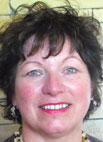
Van Hopkins was raised on an Oklahoma farm in a family where everyone worked together. They had 15 Hereford cows, all of which they milked to get enough milk for the family because grandma always said, “You can’t make any money with milking stock.” The family also tried to take care of most of their protein needs with the addition of hogs and laying chickens.
Van and his wife, Penny, carry on that tradition in Stilwell, Okla. The extended family works cooperatively and there is no hired help. Van said, “Without my wife and son, this operation just wouldn’t work because I work 12 hours a day for the school district as the transportation and maintenance director.”
Van’s father takes care of the laying hens and the family butchers about six hogs a year to accommodate the 16-person extended family. Van owns 190 acres and rents 350 to raise a herd of 130 Gelbvieh and Black Baldy momma cows and five bulls. One goal is to someday have a herd of 200 Gelbvieh, but, according to Van, black cows sell better because Angus did such a great job merchandizing. To that end he has purchased a black Gelbvieh bull and saves back the best young heifers. He now has a Gelbvieh herd of about 30 momma cows. Van said, “Gelbvieh grow fast, breed well and settle real quick. They also have great maternal instincts.”
Van tries to calve in October because he has to feed the cow anyway during the winter, and this method lets her feed the calf. Then when the grass comes in March, he has a four-month-old calf ready for grass. He weans them in April and feeds with grass and creep feeds. Then in the fall he sells bigger 12 to 13-month-old calves.
Farmers meet and talk at places like the Coop or feed store. Van said it looks like they are just wasting time and hanging around. But, according to Van, the truth is that farmers don’t like to ask for help but use the time to find out what other farmers are doing to improve their own operations and to solve problems. He said that sharing information is a better source than the literature from manufacturers because what works in one locale does not work in another. Even 50 miles can make a difference because of differing terrain and conditions.
Some ideas, however, can work anywhere. Van said that when he brands his cattle, he tries to make the experience as minimally stressful as possible. He said, “I know how I would feel, and I want to make it better for them. Plus, I want as clear a brand as possible, and one that heals quickly.” The method he uses is to shave the branding area first, which puts the skin at the surface. Because burning through thick hair to get to the skin is eliminated, the length of time the brand needs to touch the animal is very brief thereby decreasing the stress. Van’s brand is a broken circle around an “H” and is clearly visible on every animal he brands.
Van and Penny recently bought their current farm in an effort to increase their operation. Penny concluded, “I am looking forward to the someday staying here fulltime. I love it out here.” And Van agrees.







